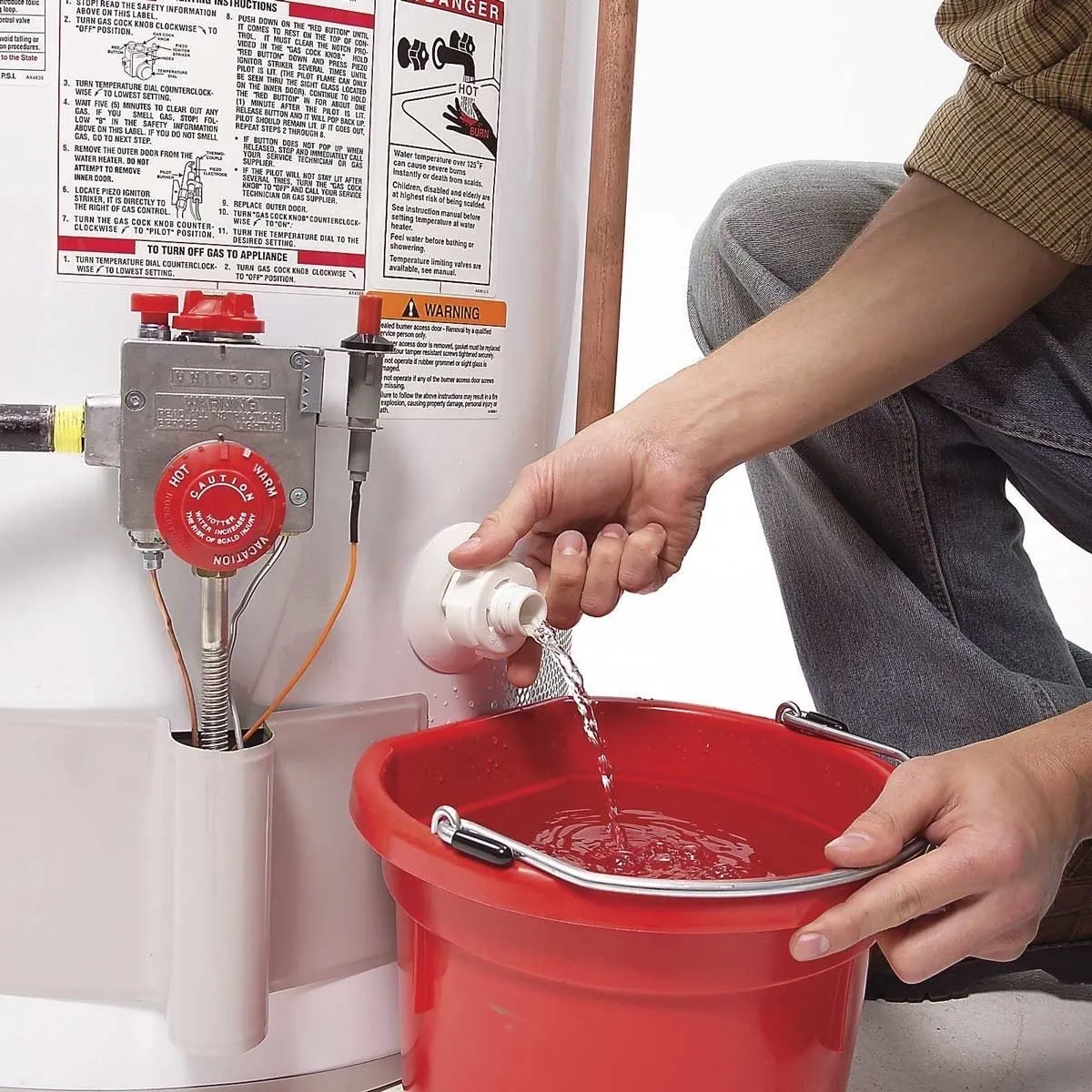
A well-maintained water heater can last 10-12 years or more, but neglecting routine maintenance can lead to higher energy bills, costly repairs, and early replacement. Whether you have a tank or tankless water heater, regular upkeep is key to keeping your system running efficiently and saving you money in the long run.
In this guide, we’ll cover essential water heater maintenance tips to help extend its lifespan, improve efficiency, and prevent breakdowns.
1. Flush Your Water Heater Tank Annually
Why It’s Important
Over time, sediment and mineral buildup from hard water can settle at the bottom of your water heater’s tank, reducing efficiency and causing overheating or damage to the heating elements. Flushing your tank once a year helps prevent these issues.
How to Flush Your Water Heater
- Turn off the power (electricity or gas supply).
- Connect a hose to the drain valve at the bottom of the tank.
- Run the hose to a safe drainage area (outdoors or a floor drain).
- Open the drain valve and let the water fully drain until it runs clear.
- Close the valve, remove the hose, and refill the tank before restoring power.
👉 Tip: If you live in an area with hard water, consider flushing your water heater every six months.
2. Check and Replace the Anode Rod
Why It’s Important
The anode rod is a metal rod inside your water heater tank that attracts corrosive elements, preventing the tank from rusting. If the rod becomes too corroded, your tank can start to deteriorate, leading to leaks.
How to Check the Anode Rod
- Turn off the water heater and drain a few gallons from the tank.
- Locate and remove the anode rod (usually on top of the tank).
- If the rod is less than ½ inch thick or heavily corroded, replace it with a new one.
👉 Tip: Check the anode rod every 2-3 years and replace it every 4-6 years to prevent rust and extend your water heater’s life.
3. Adjust the Temperature Setting
Why It’s Important
Keeping your water heater too hot can increase energy costs and cause premature wear on components. The recommended temperature setting is 120°F for optimal efficiency and safety.
How to Adjust the Temperature
- Locate the thermostat dial on the tank (or digital control for newer models).
- Set it to 120°F to prevent overheating and reduce energy consumption.
👉 Tip: Lowering your water heater temperature by just 10 degrees can save 5-10% on your energy bill.
4. Insulate Your Water Heater and Pipes
Why It’s Important
Water heaters lose heat over time, especially in cold climates. Insulating your tank and pipes reduces heat loss, helping your system work more efficiently and use less energy.
How to Insulate Your Water Heater
- Wrap the tank in a water heater blanket to retain heat.
- Insulate hot water pipes to prevent heat loss during water travel.
- Use pre-cut foam pipe insulation for easy installation.
👉 Tip: If your water heater is older than 5 years, insulation can improve efficiency by up to 10%.
5. Test the Pressure Relief Valve
Why It’s Important
The temperature and pressure relief (T&P) valve is a critical safety feature that prevents excessive pressure buildup, which could cause tank explosions. Regularly testing the valve ensures it functions properly.
How to Test the T&P Valve
- Locate the valve (typically on the side or top of the tank).
- Lift the lever slightly to release water.
- If water flows freely, the valve is working. If not, replace it immediately.
👉 Tip: Test the T&P valve every 6 months to ensure it’s working correctly.
6. Keep the Area Around Your Water Heater Clear
Why It’s Important
If your water heater is in a garage, basement, or closet, keeping the area around it clear ensures proper airflow, prevents overheating, and reduces fire hazards.
Best Practices:
✅ Keep at least 2 feet of clearance around the unit.
✅ Avoid storing flammable materials (paint, gasoline, paper) nearby.
✅ Check for leaks or rust regularly.
👉 Tip: For gas water heaters, keep ventilation areas unobstructed to prevent carbon monoxide buildup.
7. Schedule a Professional Inspection Every Year
Why It’s Important
Even with DIY maintenance, a professional plumber can catch hidden issues before they become costly repairs. An annual inspection includes:
✔️ Checking for gas leaks or electrical problems
✔️ Inspecting the burner, heating elements, and thermostat
✔️ Testing the anode rod and T&P valve
✔️ Ensuring proper water pressure
👉 Tip: An annual inspection can extend your water heater’s lifespan and save you hundreds on emergency repairs.
Final Thoughts
Taking care of your water heater doesn’t require much effort, but a little maintenance goes a long way in preventing breakdowns, improving efficiency, and saving you money.
Key Takeaways:
✅ Flush the tank once a year to remove sediment.
✅ Check and replace the anode rod every few years.
✅ Keep the temperature at 120°F to save energy.
✅ Insulate your water heater and pipes to improve efficiency.
✅ Test the pressure relief valve every 6 months.
✅ Keep the area clear for safety and proper airflow.
✅ Schedule annual inspections to prevent costly repairs.
By following these simple water heater maintenance tips, you can extend the life of your system, avoid unexpected breakdowns, and ensure consistent hot water for years to come.
Need a New Water Heater? We Make It Easy!
If your water heater is showing signs of wear and tear, leaking, or not heating properly, Discount Water Heaters offers fast, affordable, and hassle-free installation. Get a same-day quote online without the hassle of a salesperson!
📞 Call us today at (772) 202-6671 or get your instant quote online!
